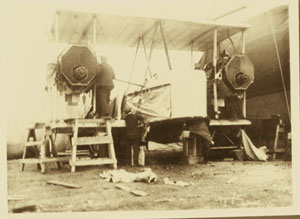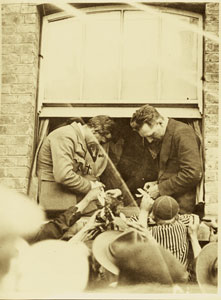In late 1918, Lord Northcliffe, founder of the Daily Mail, announced a hefty prize, equivalent today to $1 million, to the first aviators to fly between North America and England. He initially had established the award five years earlier, but had suspended the contest at the start of World War I. Now that England was beginning the slow process of recovery, the competition could resume.
Accomplishing a nonstop 2,000-mile transatlantic flight required aviators to overcome daunting challenges. The weather in the North Atlantic was generally poor, and to benefit from the westerly winds, competitors would need to depart from Canada. The most formidable obstacle was navigating for nearly 20 hours across an expanse of ocean. The optimal time to fly would be the summer, when daylight hours were at their maximum. Mariners traditionally navigated by the stars with a sextant, using the horizon as reference. But how could the same be done from the air in a large vibrating machine moving at a hundred miles an hour?
 |
|
| The Vimy used by Alcock and Brown was reconstructed in Canada by a team of workers from Vickers. Courtesy of Philip Jarrett. |
|
| |
|
Of the four teams that competed for the prize, the one that paired John Alcock and Arthur Whitten Brown had distinct advantages. Brown, while in a German prisoner-of-war camp, had passed the time working on the problem of aeronautical navigation. One of Alcock’s specialties was solving the problem of the weight of the fuel that a plane would need to carry versus the distance that the plane would need to fly and the speed of the plane en route.
By May 1919, all the teams had shipped their dismantled planes to St. John’s, Newfoundland, and had begun to rebuild them. Alcock and Brown’s plane was a Vickers Vimy F.B.27 biplane, built at Brooklands in England especially for the flight. Once it was reassembled, Alcock made only two test flights. Following some adjustments, it was time to depart.
The pair took off on the afternoon of June 14. Shortly after departure, the small propeller that drove the generator was lost, disabling the radio and the pilot’s electrically heated flying suits. Brown, navigating with a sextant, got only occasionally glimpses of the sun and stars. More frightening moments followed. After Alcock took the plane to 6,000 feet, the fuel flow gauges iced up. Kneeling on the fuselage, Brown stretched as high as he could to remove the ice. The Vimy eventually reached 11,000 feet, above the clouds, but the two began to suffer from frostbite.
 |
|
| John Alcock and Arthur Whitten Brown signed autographs after their successful transatlantic crossing. Courtesy of Philip Jarrett. |
|
| |
|
As the Vimy finally descended, Alcock and Brown saw the Atlantic, then a few rocky outcroppings and the green coast of Ireland. Alcock brought the Vimy down on what turned out to be a bog. The plane burrowed into the ground nose first. Alcock and Brown emerged unhurt, the first to fly across the Atlantic.
With them on board was a small bag containing 197 letters, the first airmail from North America to Europe. One of the letters was addressed to King George V, who later presented each man with a knighthood. Winston Churchill, then secretary of war and air, handed over the winner’s purse at a grand luncheon at the Savoy Hotel.
Continued on next page...
|
|
|
 |